 307 Note
307 Note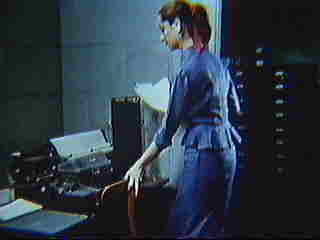 308 Note
308 Note 309a
309a  309b Note
309b Note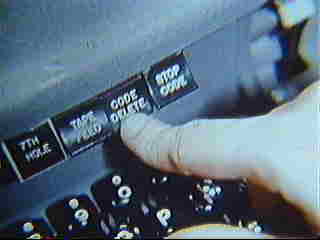 310 Note
310 Note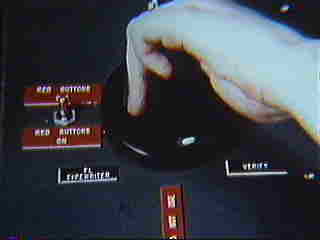 311
311 312 Note
312 Note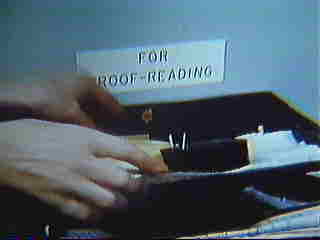 313
313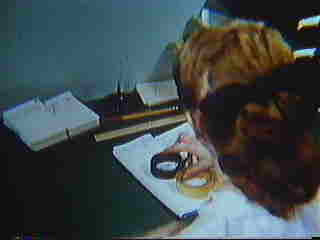 314 Note
314 Note 307 Note 307 Note |
[Tape supervisor] Writing a program is just the beginning. All the forms seem to be in order, and a punched paper tape of the program will be ready by this afternoon. Ordinarily, programmers need not be present when their programs are run. Since it seems desirable for him to watch a trial run of the program, it will be necessary for him to be at the computer room at 3:00 a.m. |
 308 Note 308 Note |
The next step is tape preparation. This girl is using the standard Flexowriter equipment. Each time a key is depressed, some combination of holes is punched on tape, and the character is printed on a sheet of paper. The same equipment may be used to copy tapes. |
 309a 309a  309b Note 309b Note |
She is now using the subroutine library, which contains tapes of previously coded routines for solving common problems, such as the evaluation of square roots, exponential, hyperbolic and trigonometric functions. A library routine can be inserted anywhere in the program by merely reproducing the tape. The most frequently used routines are stored on magnetic tape or on the magnetic drum, and selected automatically for use by the computer, thus eliminating the need for inserting them manually. |
 310 Note 310 Note |
Even the best of typists make mistakes. The error is nullified by pressing the "delete" button. This punches all the holes resulting in a special character ignored by the computer. |
 311 311 |
In order to catch undetected mistakes, the tape we have just seen typed is verified, by having a second person type the manuscript on a verifier. Disagreements in tapes will cause the verifier keyboard to lock. When this happens, the typist decides which is correct on the basis of the manuscript originally submitted. |
 312 Note 312 Note |
The comparator is used as a check against any error in the duplication of tape, by matching the original tape with the new, reproduced one. If they disagree, the comparator will stop. |
 313 313 |
These elaborate precautions help minimize any loss of expensive computer time through punching errors. The print, carbon copy, and other material are ready for the final phase. |
 314 Note 314 Note |
The technical assistant checks to be sure that all standard conventions and notations have been followed. She sends the programmer a typed copy. It is the programmer's responsibility to check the typed copy to be sure it agrees with the program he submitted. The next move is up to the computer itself. |
The MIT Museum has kindly granted permission for me to reproduce these extracts from the 1953 film on MIT Project Whirlwind,"Making Electrons Count." The permission is governed by an agreement between Daniel P. B. Smith and the MIT Museum, and covers publication at this Web site only. Individuals may view this material at this Web site, http://world.std.com/~dpbsmith/. Any other use requires permission from the MIT Museum, 265 Massachusetts Avenue, Cambridge, Massachusetts 02139-4307.
The original film credits contain no date or copyright notice and reads, in full:
The Digital Computer Laboratory of the Massachusetts Institute of Technology Presents "Making Electrons Count: Solving a Problem on M.I.T.'s Electronic Digital Computer 'Whirlwind I.' Sponsored by: Office of Naval Research. Physicist played by Dean N. Arden. Script by Edwin S. Kopley. Photographed and Directed by Lloyd G. Sanford.
--Daniel P. B. Smith, http://world.std.com/~dpbsmith/